What is an Electrical Short Circuits in Your House and How to Fix Them
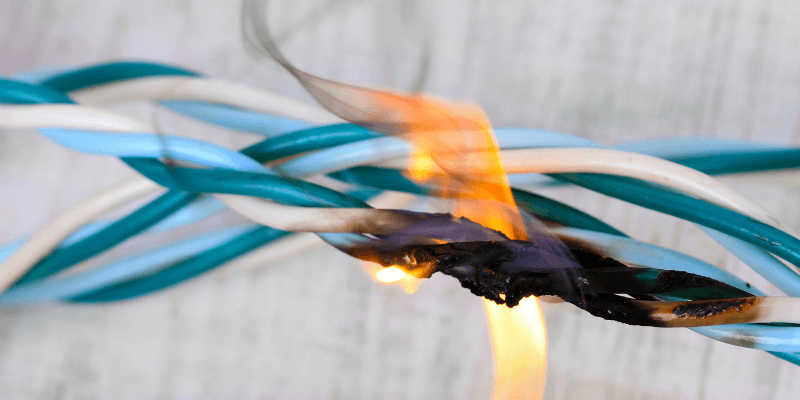
An electrical short circuit is a common problem that can occur in your house. It is caused by the flow of electricity taking an unintended path due to damaged wiring or faulty appliances. This can lead to overheating, sparks, and even fire hazards if not dealt with promptly.
Fixing an Electrical Short Circuit
The first step in fixing an electrical short circuit is to locate the source of the problem. This can be done by checking all electrical outlets, switches, and appliances in the affected area. If you are unable to identify the source yourself, it is best to seek professional help.
Once the source of the short circuit is identified, it is important to turn off the power supply to that area before attempting any repairs. You can do this by flipping the breaker or removing the fuse connected to the affected area. It is important to never attempt any repairs while the power supply is still on.
Next, you can visually inspect the wiring and appliances for any signs of damage or wear. If you notice any frayed wires, burn marks, or loose connections, these should be repaired or replaced immediately. If the issue lies within an appliance, it is best to have a professional repair or replace it. Attempting to fix electrical appliances without proper knowledge and experience can be dangerous. If the issue lies within the wiring, it is best to hire a licensed electrician for repairs.
They have the expertise and equipment needed to safely fix any damaged wiring.In order to prevent future electrical short circuits in your house, it is important to regularly inspect and maintain your electrical system. This includes checking for any worn or damaged wiring, avoiding overloading circuits, and using appliances with proper voltage.
Cost To Fix a Short a Short Circuit in Your House?
Dealing with electrical issues in your home can be a cause for concern, especially when it comes to the cost to fix a short circuit. A short circuit occurs when a current flows through a circuit where it is not intended to flow, which can result in overheating and potentially lead to electrical fires. The cost to fix a short circuit in your house can vary depending on the extent of the damage and the complexity of the wiring. It is essential to contact a trained and licensed electrician to assess the situation and provide an accurate estimate of the cost to fix the short circuit as it is not advisable to try to fix the issue yourself. Ensuring that your electrical system is functioning safely is paramount and can save you from potential hazards and more significant costs in the long run.
The term "short circuit" refers to a situation in which an electrical current follows a path of least resistance, bypassing the intended circuit. This can happen when two conductors come into contact with each other, causing a surge of electricity that can damage equipment and potentially lead to fires or electrocution.
Short circuits can occur due to various reasons such as faulty wiring, damaged insulation, or improper use of electrical appliances. They can also be a result of environmental factors such as moisture or dust, which can cause corrosion and create conductive paths where they shouldn't exist.
When a short circuit occurs, the flow of electricity increases exponentially, causing an overload on the circuit and potentially damaging any connected devices. In some cases, it may even trip the circuit breaker or blow a fuse, cutting off the power supply to prevent further damage.
To prevent short circuits and potential hazards, it is important to regularly inspect and maintain electrical systems and appliances. This includes checking for loose connections, damaged cords or plugs, and ensuring proper grounding of equipment. It is also important to use electrical devices as intended and avoid overloading circuits by using multiple high-power devices on the same circuit. In case of a shortcircuit, it is important to turn off the power supply and seek professional help to properly diagnose and fix the issue. Attempting to fix a short circuit without proper knowledge and equipment can be dangerous and should be avoided.
A short circuit is one of the most common electrical faults. It occurs when a low-resistance path between two or more conductors causes an excessive flow of current, resulting in overheating and damage to the system.
Causes of Short Circuits
Short circuits can be caused by various factors, such as:
- Damaged insulation: The insulation on electrical wires can wear off over time, allowing the wires to come in contact with each other and cause a short circuit.
- Faulty wiring: Incorrectly installed or damaged wiring can also lead to short circuits.
- Overloading: When too many devices are connected to a single circuit, it can overload and cause a short circuit.
- Moisture: Water is an excellent conductor of electricity, and if it comes into contact with electrical components, it can cause a short circuit.
Electric short circuit is a common phenomenon that can occur in any electrical system, from small household appliances to large power grids. It happens when a low resistance connection is made between two points in an electrical circuit, causing excessive amounts of current to flow through the unintended path.
One of the main causes of electric short circuits is faulty wiring or damaged insulation, which can lead to exposed wires. When two exposed wires come into contact, a short circuit may occur. This can also happen when an appliance or electrical device is damaged, causing its internal components to come into direct contact with each other.
Another common cause of electric short circuits is overloading of electrical circuits. This happens when too many devices are connected to a single circuit, and the total current drawn exceeds the capacity of the circuit. This can lead to heating up of wires and other components, causing them to melt or catch fire.
Short circuits are also a common occurrence in outdoor power lines during storms or severe weather conditions. Strong winds, lightning strikes, and falling debris can cause damage to overhead power lines, resulting in short circuits.
In addition to posing a significant threat to the safety of individuals, electric short circuits can also cause damage to electrical equipment and appliances. Due to the excessive current flow, wires can melt or catch fire, damaging the surrounding components
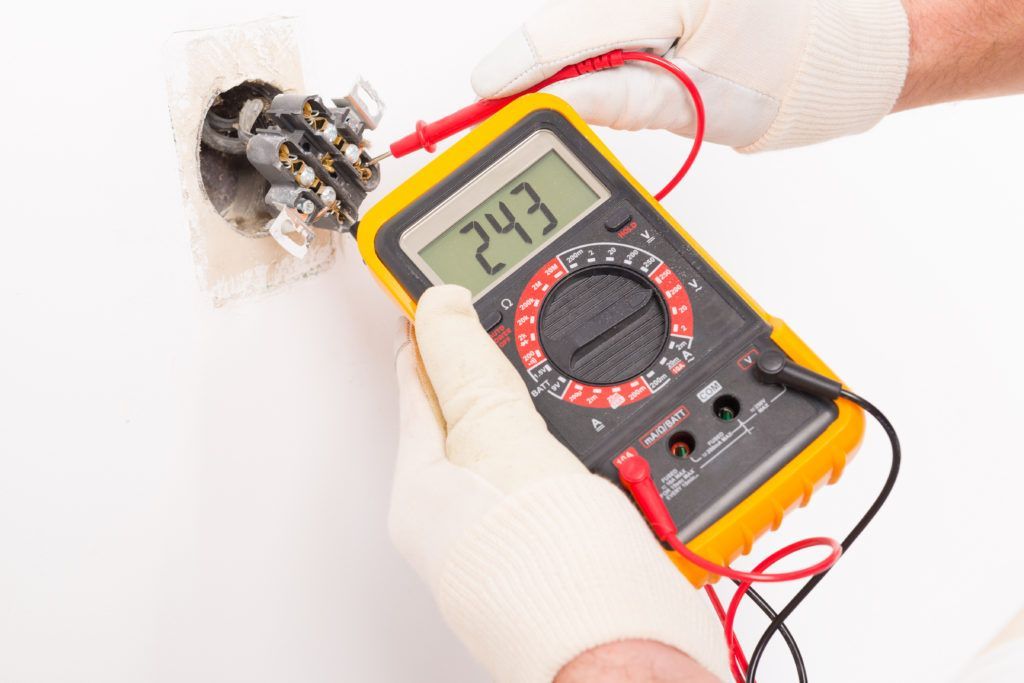
How to Find a Short Circuit in Your House
1.Prepare Your Work Area and Safety Measures Before you begin, make sure that you have turned off all the power in your house. You can do this by switching off the circuit breakers or removing fuses from the main panel. Once you are sure that there is no electricity running through your house, make sure to take safety measures such as wearing gloves and goggles.
2. Check for Obvious Signs Start by examining all the outlets and fixtures where you suspect the short circuit could be located. Look for any signs of burn marks, melted wires, or a burning smell. These are clear indications that there is a short circuit present.
3. Use Your Multimeter
Set your multimeter to the lowest resistance setting and touch one probe to the hot wire (usually black) and the other to the ground wire (usually green or bare). If the reading is zero or close to it, then there is a short circuit in that particular circuit.
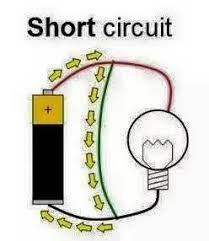
A short circuit occurs when an electrical current finds a low-resistance pathway to bypass a specific component in an electric circuit. This results in the flow of excessive current, leading to potential damage or fire hazards.
There are several reasons why a short circuit may occur. One common reason is when the insulation between two conductors breaks down due to wear and tear, heat, or moisture. This allows the conductors to come into contact with each other, creating a low-resistancepathway for the current to flow through.
Another possible cause of a short circuit is when wires are not properly insulated or secured, resulting in them coming into contact with each other or other conducting materials. This can happen due to improper installation, physical damage, or environmental factors such as rodents or corrosion.
Short circuits can also occur due to faulty components, such as damaged wires, connectors, or switches. These defects can cause the current to divert from its intended path and create a short circuit.
In addition to causing potential damage and fire hazards, short circuits can also disrupt the normal functioning of electrical devices. When a short circuit occurs in a device, it may cause it to malfunction or stop working altogether. This can be particularly dangerous in critical equipment, such as medical devices or industrial machinery.
To prevent short circuits from occurring, it is important to regularly inspect and maintain electrical systems and devices. This includes checking for damaged insulation, securing wires and connectors properly, and promptly replacing any faulty components.
A short circuit is an abnormal connection between two nodes of an electrical circuit that causes the current to flow through a path with very low resistance, leading to excessive flow of electricity and potentially causing damage. The term ‘short’ refers to the low or zero level of resistance in comparison to the typical load resistance in a circuit.
I
n simple terms, a short circuit occurs when electrical wires touch each other or come into close proximity, bypassing the intended load and creating a direct path for the current to flow. This results in a significant increase in current flow, which can cause wires to overheat, insulation to melt and potentially lead to electric fires.
Short circuits are most commonly caused by frayed or damaged wires, loose connections, or faulty electrical equipment. They can also be caused by environmental factors such as water or dust entering the circuit, which can lower resistance and create a short circuit.
Short circuits are dangerous because they can cause overheating and potentially lead to fires. In addition, the sudden increase in current flow can damage electronic devices and appliances connected to the circuit.
A short circuit is a type of electrical fault that occurs when two or more circuits come into contact and bypass the intended path of current flow. This results in an unintended high amount of current flowing through the circuit, potentially causing damage or failure to electrical components.
Causes of Short Circuits:
There are several common causes of short circuits, including faulty wiring, damaged insulation, loose connections, and overload conditions. Faulty wiring can occur due to wear and tear over time, or as a result of improper installation.
Damaged insulation is also a common cause of short circuits, which can be caused by rodents or other animals chewing on wires. Loose connections can also lead to short circuits, as they create gaps in the circuit that can allow current to flow in unintended paths. Overload conditions occur when too many electrical devices are connected to a single circuit, causing it to exceed its maximum load capacity.
Short-circuiting is a concept that is commonly used in the fields of electrical engineering and computer science. It refers to a phenomenon where an electrical current takes an unintended path due to a fault or malfunction in the system, resulting in a disruption of normal operation. In simpler terms, it can be described as when electricity "cuts corners" and bypasses part of its intended circuit. This can lead to various consequences, such as overheating or even fires in electrical systems.
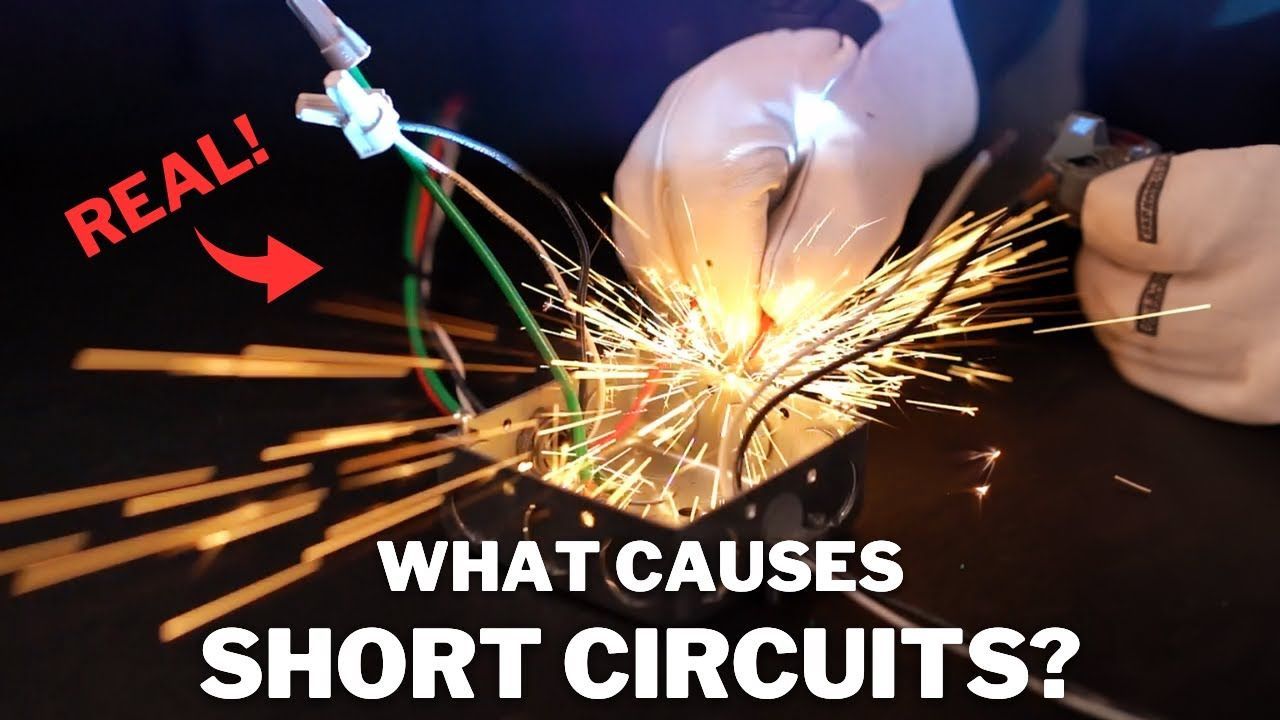
A short circuit is a malfunction that occurs when the electrical current in a circuit deviate from its intended path and instead flows through an unintended low resistance pathway. This can be caused by various factors, including faulty wiring or damaged components. One of the most common causes of a short circuit is poor insulation around wires. If th protective coating on a wire becomes damaged or wears away over time, it can expose the metal wire and cause a short circuit. This is why it is important to regularly inspect wiring for any signs of wear or damage and to replace damaged wires
immediately.
Another common cause of short circuits is faulty electrical components. If a component such as a switch, outlet, or fuse becomes damaged or worn out, it can create a low resistance pathway for the electrical current to flow through, causing a short circuit. It is important to regularly check and replace any faulty components in order to prevent short circuits from occurring. Additionally, moisture can also cause short circuits. If water or other liquids come into contact with electrical components or wiring, it can create a high resistance pathway for the current to flow through. This can lead to an overload and cause a short circuit. Therefore, it is important to keep electrical components away fromareas where they may come into contact with moisture.
A short circuit is an electrical fault that occurs when there is an unintended connection between two or more points in an electrical circuit. This can happen when a wire touches another wire, the ground or any other part of the circuit. When a short circuit occurs, it can cause damage to equipment and potentially start a fire. Therefore, it is important to be able to identify and fix short circuits.
Identifying a Short Circuit
One of the first steps in finding a short circuit is to check for any obvious signs. Look for burnt or melted wires, as well as black marks or smoke residue around electrical connections. This can indicate where the short circuit has occurred. You should also check if any fuses have blown, as this can also be a sign of a short circuit.
Another way to identify a short circuit is by using a multimeter. Set the multimeter to measure resistance and then test the electrical connections in the circuit. If there is little to no resistance, it could indicate a short circuit.
Locating the Short Circuit
Once you have identified that there is a short circuit, the next step is to locate the exact point where it is occurring. This can be done by using a circuit breaker finder tool, which works by sending a signal through the circuit and allowing you to trace its path using a receiver.
If you do not have access to a circuit breaker finder, another way to locate a short circuit is by systematically disconnecting different parts of the circuit and testing them for continuity using a multimeter. When the short circuit is found, the multimeter will show little to no resistance
How to Test for a Short Circuit
A short circuit is a common electrical problem that occurs when there is an unintended connection between two points in an electrical circuit. This can cause excessive current flow, leading to overheating and potentially damaging your equipment or causing a fire. In this guide, we will discuss how to test for a short circuit and identify the source of the problem.
Tools Needed for Testing
To test for a short circuit, you will need the following tools:
- Multimeter: This is a versatile tool used for measuring voltage, current, and resistance. You can use it to test if there is a short circuit by measuring the resistance between two points in the circuit.
- Insulation tester: This is used to check the insulation resistance of wires and components. A low reading on your insulation tester could indicate a short circuit.
- Wire strippers: These are used to remove the insulation from wires for testing.
- Spare fuses: In case a fuse blows during testing, it's important to have spares on hand to replace them.
Step-by-Step Guide for Testing
Now that you have the necessary tools, follow these steps to test for a short circuit:
- Disconnect power: Before performing any tests, make sure to turn off the power to the circuit you will be testing.
- Inspect the circuit: Visually inspect the entire circuit for any obvious signs of damage, such as burnt or melted wires.
- Check fuses: If your equipment has fuses, check them for signs of damage or if they have blown. Replace any blown fuses with spares before continuing with testing.
- Test for continuity: Using your multimeter, set it to the continuity or resistance setting and touch the probes to both ends of the circuit. If there is a short circuit, you will get a reading close to 0 ohms.
- Isolate sections: If you get a reading indicating a short circuit, start isolating sections of the circuit by disconnecting wires or components until the reading changes. This will help narrow down where the short circuit is occurring.
- Check insulation: Using your insulation tester, check the insulation resistance of each wire and component in the isolated section. A low resistance reading could indicate a short circuit.
7. Fix the issue: Once you have identified the source of the short circuit, fix it by replacing any damaged wires or components. Make sure to test the circuit again after making any repairs.
Once you have identified the source of the short circuit, you can proceed with fixing it. Here are some methods that can help you fix a short circuit:
1. Replace damaged wires: If you find any damaged
wires, they should be replaced immediately. Cut out the damaged section of the
wire and strip the ends to expose fresh wire. Then, connect the new section of
wire using appropriate connectors.
2. Replace faulty components: If a specific component
is causing the short circuit, it may need to be replaced. This could include
fuses, resistors, or capacitors. Make sure to use the correct replacement part
for your circuit.
3. Check for incorrect wiring: If the short circuit
is caused by incorrect wiring, you will need to make corrections. Double check
the wiring diagram or consult an expert to ensure that all connections are made
correctly.
4. Use a multimeter: A multimeter is a useful tool
for diagnosing and fixing short circuits. It can help you identify the exact
location of the short and determine if any components need to be replaced.
5. Use circuit breakers: Another way to prevent short
circuits is by using circuit breakers. These devices are designed to trip when
an excessive amount of current flows through a circuit, preventing damage or fire.
It is important to note that fixing a short circuit may require some technical knowledge and expertise. If you are not confident in your abilities, it is best to seek help from a professional electrician. ACDC Electric 970-330-1656
In an electrical circuit, there are two types of faults or failures that can occur - short circuits and open circuits. Both of these can disrupt the flow of electricity and cause damage to electronic devices if not handled properly.
A short circuit is when there is a low-resistance connection between two points in an electrical circuit. This results in a large amount of current flowing through the short circuit, causing overheating and potentially leading to a fire. Short circuits can occur due to damaged wires or faulty components in an electrical device.
On the other hand, an open circuit is when there is a break in the flow of electricity in a circuit. This means that the current cannot complete its path and as a result, no electricity flows through the circuit. Open circuits can be caused by disconnected or broken wires, damaged components, or faulty connections.
Apart from the difference in how they occur, short circuits and open circuits also have different effects on electronic devices. In a short circuit, there is an excessive amount of current flowing through the circuit which can cause damage to components and potentially render the device unusable. In an open circuit, there is no current flow at all, which means the device will not function properly.
In terms of troubleshooting, identifying a short circuit is usually easier than finding an open circuit. A short circuit can be detected by using a multimeter to measure the resistance between two points in the circuit. If the resistance is very low or zero, it indicates a short circuit. On the other hand, an open circuit can be more challenging to identify as it could be caused by a variety of factors and may require more extensive testing.
To prevent both short circuits and open circuits, proper wiring and regular maintenance of electronic devices are essential. This includes checking for damaged wires or components, making sure connections are secure, and not overloading circuits with too much current. It is also important to use the correct voltage and amperage for each device to avoid overloaded.
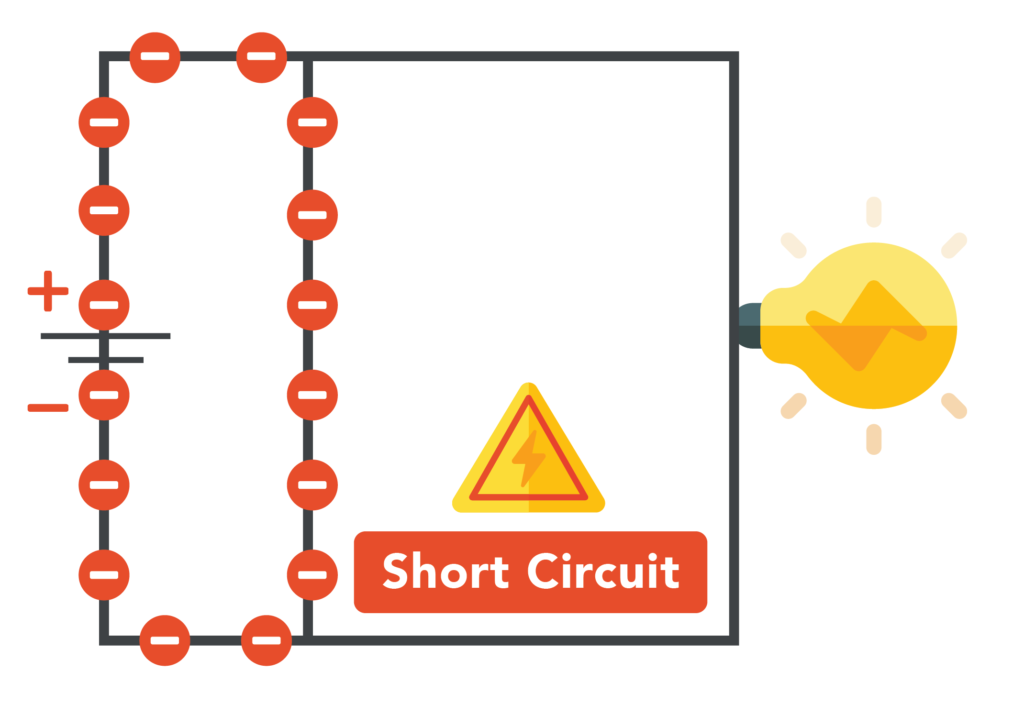
A short circuit is an electrical malfunction that occurs when two points in a circuit come into contact with each other, resulting in the flow of current being diverted from its intended path. This can be caused by various factors such as damaged wires, faulty connections, or faulty components.
In order to understand how a short circuit works, it is helpful to look at a diagram of a short circuit. This will help explain the different elements involved in the circuit and how they interact with each other.
Diagram Explanation
A diagram of a short circuit typically shows two parallel lines representing the conductors, with a break in between. This break can be caused by damaged wires or components that have come loose.
When the two lines touch, it creates a closed loop where the current can flow freely without any resistance. The power source then provides an excessive amount of energy, causing an overload that can damage the circuit and its components.
In summary, understanding how a short circuit works is crucial in preventing accidents and protecting electrical equipment. It is always important to handle and maintain electrical systems carefully to avoid the occurrence of a short circuit. So, it's necessary to consult an expert before handling any electrical repairs or installations. With proper knowledge and caution, we can ensure the safe use of electricity in our daily lives.
Now that you have a basic understanding of short circuits, you can also explore other related topics such as circuit protection devices and safety measures to prevent electrical accidents. Remember, knowledge is power, especially when it comes to dealing with potentially dangerous situations like short circuits.
Short circuits are a common problem for homes and businesses alike. Essentially, a short circuit occurs when a current flows through an unintended path, bypassing the intended electrical load. This can cause significant damage or even fires if left unchecked. One of the primary methods of preventing short circuits is through the use of fuses. Fuses are designed to trip when they detect an excessive current flow, thereby cutting off the circuit and protecting devices and people from harm. Understanding the role that fuses play in preventing short circuits is crucial for any homeowner or business owner looking to keep their property safe and secure.
Let the professionals at AC-DC Electrical Services take care of any home short circuits, blown fuses or handle the tough electrical jobs for you. If you need to install new breakers or a whole new breaker panel or fuse issues, they have the knowledge and experience to do the job right. Give them a call at 970-330-1656 to schedule a service call.
You might also like

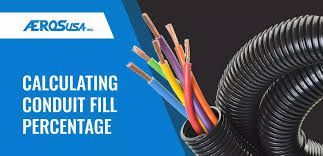
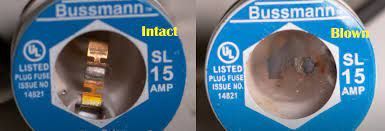
Book a Service Today
We will get back to you as soon as possible
Please try again later

